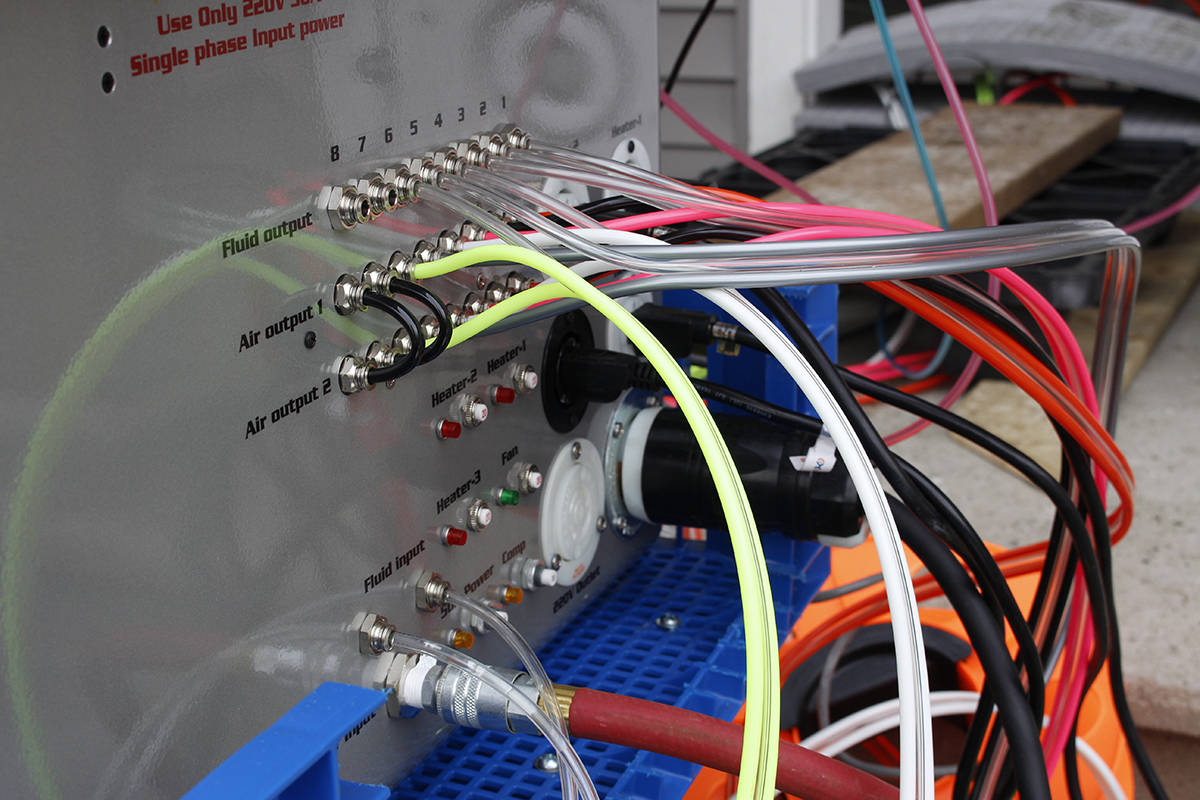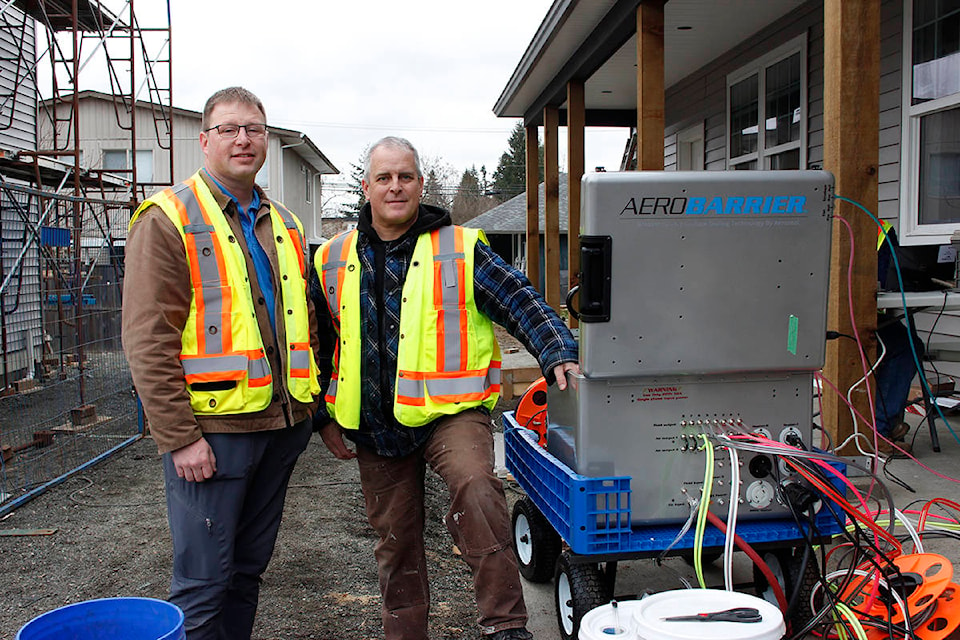Habitat for Humanity Vancouver Island North is well on its way to completing the next two units at its Lake Trail Road build, and now, thanks to Island AeroBarrier Inc, the buildings are sealed up tight.
Island AeroBarrier is a brand-new business on the Island, based out of Courtenay. The company recently donated its services to the non-profit to seal up the building envelopes using breakthrough technology.
Owner of the Island branch, Paul Moquin, says he is excited to bring the new, innovative technology to the Comox Valley and is happy to help out Habitat for Humanity.
“I wanted to get my crew up and trained so it was a good fit,” he said. “These guys had a couple buildings that were up and ready and I could donate my services to them to make these buildings more energy efficient.”
AeroBarrier is a water-based acrylic that is sprayed in a fog throughout each room to seal air leaks in the building. The building is first pressurized with a high-powered fan and the sealant is carried towards holes and cracks with the escaping air, closing them.
The sealant is capable of closing any holes from a pin-prick to a half-inch gap, and while 24 hours is needed to clear the air after spray foam is applied, crews can be back in the building and working only half an hour after AeroBarrier is sprayed.
“Energy efficiency goes up,” said Moquin. “They can downsize the furnace and heating system because there’s not as much air leakage going out. It also makes the buildings more durable because it stops the moisture from being able to get into the walls where it can condense and cause mould and rot and stuff like that.”
Moquin, who is also an energy advisor, knows too well how hard it can be to get buildings sealed properly to meet building codes, but with AeroBarrier, the seal is guaranteed.
While the product is being applied, the computerized system tracks the building pressure and the air changes per hour (ACH) to ensure it is up to code.
On Thursday, the Lake Trail Road unit started at 2.0 ACH, but after applying AeroBarrier, finished at 0.42 ACH, below the requirement of 0.6 ACH for passive homes. To put it in perspective, Moquin said the size of the holes in the townhome to begin with would have totalled 48 square inches, but the AeroBarrier fog reduced that to eight square inches.
Logan RonHovde, project manager with Habitat, says the non-profit’s goal is to provide safe, affordable housing to their families which includes affordable ways to heat and maintain the building. With AeroBarrier’s help, they can provide that.
“We talk about safe and decent affordable housing, so we’re always focusing on how can we build this less expensively, more efficiently, but also better,” said RonHovde. “We’re still able to build very affordably, but this helps us bring the tightness of the building envelope to a place where it’s going to be more affordable to maintain, it helps seal out moisture and reduces heating costs.”
Habitat for Humanity is very grateful for the partnership with AeroBarrier on these two units. He expects the units on the build to be ready for move-ins in the next couple months.

